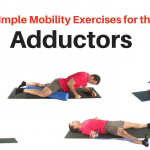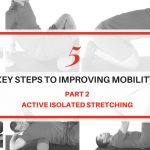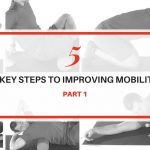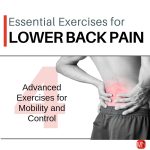
Static stretching has gotten a bad wrap in recent years. But I think much of this condemnation is unfair. The issue is not whether static stretching is effective. The issue is what does static stretching do? And not do?
Let’s start with an established fact. Static stretching increases flexibility. There is a large body of research that supports this notion.
But remember isolating variables is the nature of research. Which means most of these studies look at isolated joint ROM. Making the assumption that this increased flexibility will automatically improve functional movement patterns is taking a big leap.
Static stretching improves capacity, but not necessarily control.
Does this mean we should abandon static stretching? No. But we do need to be aware of and address these limitations.
So if static stretching is effective in improving stretch capacity but not movement control, we can address this shortcoming by building control into the stretch.
Making Static Stretching More Effective
Remember our bodies form a series of movable links. And our bodies are very good at compensating for things that are not working properly, including tight muscles. This is particularly true with the hip.
If we have tight hip flexors the tendency is for the lower back to extend or rotate during gait. Likewise, restricted hamstrings will force the spine into flexion to get the hands towards the floor during a forward bend.
These are predictable patterns, and we must not allow these compensations during static stretching! It is not just about stretching a muscle. It is about making sure the movement occurs through the right joint.
So how do we work this concept into static stretching? Simple. We teach our patients how to control the compensating segment during the stretch.
Let’s look at this with the hip flexors.
The Kneeling Lunge Stretch
The kneeling lunge stretch is a classic hip flexor stretch. While it can be one of the most effective stretches, the vast majority of the time it is done incorrectly.
Here is how it needs to be done.
- First begin in a kneeling lunge position and make sure your hips are pointing straight ahead
- Now perform a posterior pelvic tilt. This pelvic tilt is the key as it stabilizes the pelvis and lower back
- Maintain the posterior pelvic tilt then slide forward. As you do this you should feel a stretch along the front of your hip and thigh
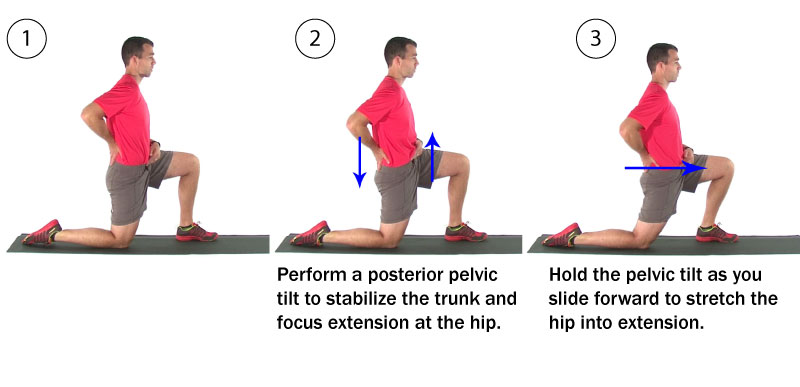
Here’s why it needs to be done this way…
Presumably this stretch is being performed because the hip flexors are restricted and limiting hip extension mobility. As stated above, when this is the case the tendency is for the tight hip flexors to pull the pelvis anterior as the hip extends.
If this is not corrected the kneeling lunge stretch (or any other stretch) will be ineffective as it is actually creating the very pattern we need to correct. That is why performing the kneeling lunge stretch with an active posterior pelvic tilt is so important. It increases the stiffness of the trunk and focuses the movement at the hip joint.
This leads to a better stretch. But it also helps to retrain the hip extension movement pattern. In other words, it makes the kneeling lunge stretch more functional as it more closely mimics how the hip joint needs to work with activities such as walking, running, or climbing stairs.
Applying Pelvic Tilts with Traditional Static Stretching
I add pelvic tilts to most of the stretching exercises I prescribe to my patients. Just remember the pelvic tilt needs to be in the direction opposite to the intended stretch.
For hip extension stretches like the kneeling lunge stretch described this means performing a posterior pelvic tilt. For stretches involving hip flexion, such as a hamstring or posterior hip stretch, an anterior pelvic tilt needs to be used.
While most people are at least somewhat familiar with these movements, in some cases you will need to teach your patient how to perform these pelvic tilts. And they may need to practice these pelvic tilts as a stand alone exercise for a few days before progressing to the stretch.
A final note on static stretching
As discussed, static stretching can be a simple and effective tool to improve mobility. Especially when incorporating pelvic tilts to promote the intended movement pattern.
But while I often prescribe static stretches, I rarely prescribe them by themselves. More commonly I prescribe them as part of a mobility sequence that includes additional exercises techniques such as self myofascial release (see Part 1 of this article series) or Active Isolated Stretching techniques (see Part 2) that target other aspects of mobility.
This sequencing is exactly what I will discuss in Part 4 of this article series.



